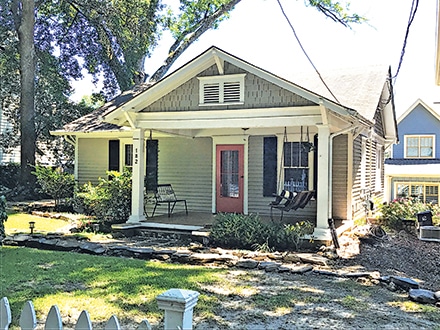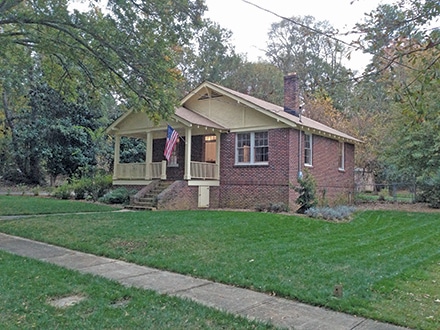
In a county known for attracting successful businesses and enjoying considerable affluence, why the interest in accommodating “tiny” homes?
“I believe that Norcross is pretty special,” said Councilman Josh Bare, who is excited about this growing trend in housing. Bare is the city leader who initially recommended some guidelines for tiny home construction in the city.“Councilman Andrew Hixson and I share a lot of the same ideas, and we see similar needs for the city,” Bare said. “When you think about it, we really don’t own our ‘stuff,’ our ‘stuff’ owns us. Building a tiny home and owning it gives people an alternative to apartment living and really lightens the burden of debt.”

Another good example of the type of homes the city intends to invite is the Wingo Street Cottages development. “These homes are very small by most peoples’ standards – about 1000 – 1400 sq. ft. – Bare said. The Wingo Street homes, according to several real estate websites, make smart use of every inch of the floor plan. Maintenance is easier, and utility bills are lower, making a “tiny” home the perfect solution for seniors or simply for those who wish to contain the time and resources they spend maintaining a home.
The popular Tiny House Festival held in Decatur, held last year and slated for a 2017 return, is hosted by Tiny Homes, a pioneer in education and advocacy for the tiny house movement. Some of the homes showcased at the Festival last year were as small as 400 sq. ft. The festival will return this year, from September 29 – October 1 (see http://www.decaturmetro.com/2017/03/01/tiny-house-festival-returns-to-decatur-this-fall/ for more details). Similar festivals are popping up across the nation and enjoying enthusiastic reception by people looking to understand more about smaller-home living.
Tiny House Atlanta is an advocacy group that promotes the building of neighborhoods similar to condominium neighborhoods, at the cost of about $40,000 per home. Organizations working to provide help and hope to the homeless are taking notice of this and similar movements, as the allowance of “tiny” homes in areas where they have previously been prohibited could virtually end the sweeping problem of homelessness among families and individuals hit hard by the laboring economy.

Not surprisingly, the city of Atlanta is getting its feet wet in the “tiny homes” market, also. The R5 zoning designation – the one that allows Accessory Dwelling Units – includes Grant Park, Inman Park, Old Fourth Ward, Edgewood and Candler Park, and dwellings may not be larger than 750 sq. ft. Before the new legislation was enacted, the only accessory structures allowed on properties in these areas was a carriage house, a detached garage, or some similar building. In other words, accessory structures could not contain a kitchen, a stipulation that obviously prohibited construction of a separate standalone house.
Bare refers to the Gainesville community of Chicopee as an excellent example of the type of community that “tiny” homes can comprise. “Chicopee is actually an old mill town for Johnson & Johnson,” he said. “It was really kind of a socialist experiment, I suppose, but the homes in the community are 900 – 1200 sq. ft. in size. They are well-built, with wood floors, slate roofs, things like that. That town fascinates me. It is really a standalone conservation community.” As a Johnson & Johnson mill town, home occupants could not own the dwellings; the company did. Of course, Bare sees a forward-thinking vision in the construction and size of the homes, with individual homeowners owning them.
Bare, and apparently many other lawmakers in cities from coast to coast, see the advantage of building accessory housing on property that can be inhabited by grandparents, children, or even renters. The “tiny homes” market is simply a natural offshoot of a society in which people are living longer, and economic concerns are driving housing choices. “They can be built, and built well,” Bare said, “giving people the option of home ownership with less of a financial burden. And think about it; how nice would it be if Grandma could live that close but still maintain her privacy and independence?”

